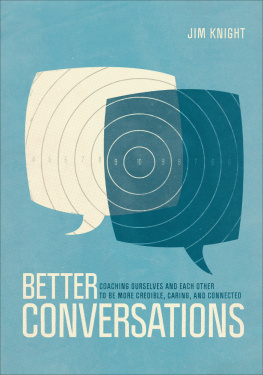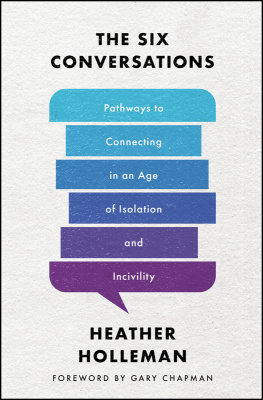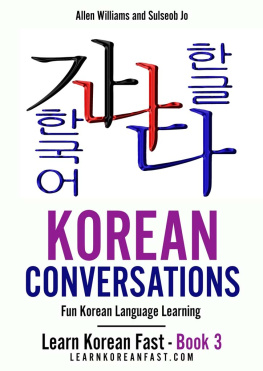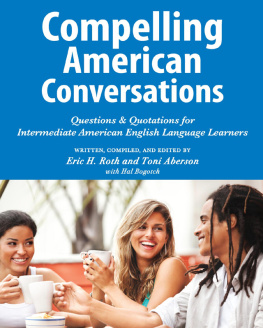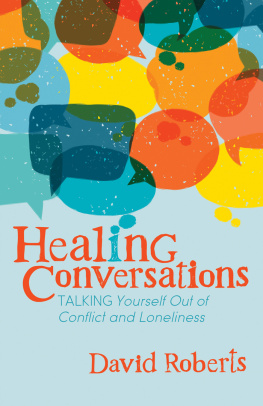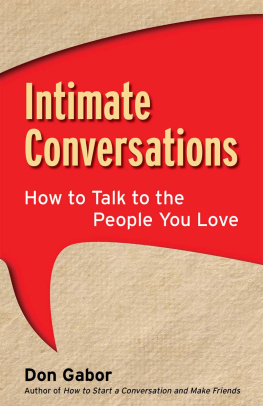Academic Conversations
Academic Conversations
Classroom Talk That Fosters Critical Thinking and Content Understandings
Jeff Zwiers & Marie Crawford

Stenhouse Publishers
www.stenhouse.com
Copyright 2011 by Jeff Zwiers and Marie Crawford
All rights reserved. Except for the pages in the appendix, which may be photocopied for classroom use, no part of this publication may be reproduced or transmitted in any form or by any means, electronic or mechanical, including photocopy, or any information storage and retrieval system, without permission from the publisher.
Every effort has been made to contact copyright holders and students for permission to reproduce borrowed material. We regret any oversights that may have occurred and will be pleased to rectify them in subsequent reprints of the work.
Library of Congress Cataloging-in-Publication Data
Zwiers, Jeff.
Academic conversations : classroom talk that fosters critical thinking and content understandings/ Jeff Zwiers and Marie Crawford.
p. cm.
Includes bibliographical references and index.
ISBN 978-1-57110-884-5 (pbk. : alk. paper) -- ISBN 978-1-57110-922-4 (e-book)
1. Thought and thinking--Study and teaching (Elementary) 2. Conversation--Study and teaching (Elementary) 3. Cognitive learning. I. Crawford, Marie. II. Title.
LB1590.3.Z94 2011
370.152--dc22
2011014790
Cover design, interior design, and typesetting by designboy Creative Group
Manufactured in the United States of America

17 16 15 14 13 12 11 9 8 7 6 5 4 3 2 1
Contents
Acknowledgments
We are deeply grateful for the tireless and brilliant work of so many teachers across the country who contributed ideas to this book. Special thanks go to Kim Yamashita, Dayna Yonamine, Patrick Hurley, and Octavio Rodriguez for their insights, patience, reflection, and exceptional teaching. Thanks also to Jenna Wachtel, Kristi Rallu, Rachel Spector, and Jennifer Bloom for the many insight-filled conversations about conversations.
Introduction
I didnt know what I knew until I talked about it.
Seventh-grade science student
Since the dawn of language, conversations have been powerful teachers. They engage, motivate, and challenge. They help us build ideas, solve problems, and communicate our thoughts. They cause ideas to stick and grow in our minds. They teach us how other people see and do life, and they teach other people how we see and do life. Conversations strengthen our comprehension of new ideas.
Conversations are also powerful sculptors. They shape our identities, thoughts, beliefs, and emotions. We all have had intense conversations from which we walked away (or lost sleep) mulling over the ideas that we discussed. Conversations can leave us pondering and processing ideas for hours, days, and even years. These ideas, in turn, contribute to the inner dialogues that we hold in our heads throughout each day (Vygotsky 1986), which sculpt our thoughtswhether we like it or not.
More than we realize, we are the products of thousands of conversations.
As we worked in classrooms as instructional coaches and began to tap the teaching and sculpting power of extended, back-and-forth talk between students, an approach emerged that we called academic conversations. We then wrote down some of the ideas, stories, and examples, and hope that they will help you sharpen and deepen the learning that is already happening in each of your lessons. But be ready for a louder classroom.
What Are Academic Conversations?
Conversations are exchanges between people who are trying to learn from one another and build meanings that they didnt have before. Partners take turns talking, listening, and responding to each others comments. Academic conversations are sustained and purposeful conversations about school topics. These topics vary widely, ranging from themes in The Adventures of Tom Sawyer to causes of the French Revolution, from the role of geography in culture to the debate on the use of stem cells. But regardless of topic or content area, in our classroom observations and analyses , are used to explore and focus on an academic topic.
Five Skills That Focus and Deepen Academic Conversations

These skills (some of which are also called discourse moves) work together to help students focus on and explore an important question, idea, or topic. You will notice most of these skills in your own conversations with colleagues and friends. And even though this book emphasizes paired conversations, these are skills that empower students to communicate well in a variety of situations, such as whole-class discussions, small groups, workplace meetings, social gatherings, and family interactions. These communication skills also align very well with the skills needed for high-quality academic writing and reading.
A Brief Background of Academic Conversation Work
In the years leading up to the writing of this book, we observed, as instructional coaches, many classrooms that used a wide variety of what were considered best practices. We saw some students who were engaged and talking productively. But the other students, many of whom were English language learners (ELLs) and speakers of nonmainstream dialects of English, werent talking much. And as we listened in to what students were talking about, we realized that they werent having productive conversations. They could answer questions in short think-pair-shares and use memorized sentence starters to respond to the teacher, but they seldom took turns to negotiate meaning or dig into a topic. Students seldom co-constructed ideas, clarified thoughts for each other, or supported their opinions.
During our work with teachers, the focus on classroom talk intensified one day when we asked a fourth-grade student what she liked to do. Her eyes got really wide, and without hesitation, she emphatically said, I love to talk! This was quite true, but most of her talk, like that of others in the class, was not academic. And a handful of students in the class did not like to talk, especially in whole-class discussions. Many discussions and conversations were similar to this:
A: Why did the author write this?
B: To teach us about courage.
A: Yeah, the guy was brave.
B: Okay. What do we do now?
We then looked at the literature that argues for more and better student talk in classrooms, and we wondered if we could do something that tapped into students passions for talking and also encouraged shy students to talk academicallyand to each other. We had seen quite a few resources on teacher-led whole-class and group discussions, but we found few practical resources on training students to converse academically in pairs and small groups on their own.
Teachers whom we coached and their colleagues became interested in the topic of classroom conversations and joined the discussions, expressing their desire to improve students oral language skills, critical thinking, and content understandings far beyond what tests required. Teachers also wanted a way to see students learning that didnt show up in their writing or on multiple-choice tests. Teachers wanted to transform their classrooms into places where students initiated and maintained conversations, creating, shaping, applying, negotiating, and sharing academic ideas.
Next page

